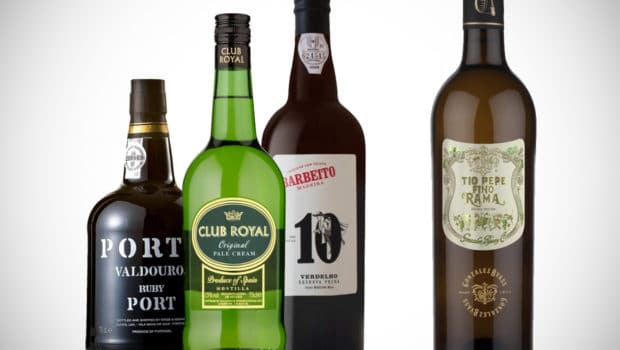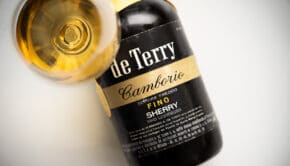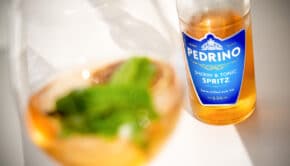Wine-searcher and the popularity of sherry
In October an article appeared on Wine-searcher.com with the title Sherry is dying, Pass the Port. This opinion piece, written by their editor Don Kavanagh, talks about the popularity of sherry wines, which he calls ‘the go-to wine for both maiden aunts and hairy faced hipster sommeliers’. It was also mentioned in Tim Atkin‘s recent article Let’s hear it for Sherry.
The premise of the article is that the category of sherry is dying, contrary to reports saying sherry has never been in better health. The author based his claim on search figures from the Wine-searcher website, compared to rivalling wines Madeira and Port. The most popular Port had 46 times as many searches as the most popular Sherry.
In the past five years, searches for sherry have been in decline and were reduced to seasonal peaks around Christmas – those of Port have grown steadily. Madeira also surpassed sherry as a category for the first time. In total he is now seeing a search share of 85% for Port, 8% for Madeira and 7% for Sherry, even though the number of sherries listed on the website is half the amount of Port wines.
A critical approach to Wine-searcher’s interpretation
Fair enough, we can’t deny these figures. Wine-searcher makes a business from big data, and while the figures may well be accurate, it is important to keep a critical approach to their interpretation. I have a couple of important remarks to make in this respect.
First of all, using data from one specific website is not ideal to get an indication of the global interest in wine. Every website has a target audience and focuses on certain countries. Most of them prioritize and actively promote certain brands and product categories as part of their business model (when I ask wine-searcher to suggest any dessert wine, their ‘top pick’ is a Port wine for instance). We’re not getting any context from Wine-searcher so the data may not be entirely representative.
In any case it is a UK / US / Australia-focused website: half of its visitors come from the US (where sherry has a growing but very small following) and also their selection of wineries is slightly biased. This bias is unavoidable, but sherry relies on a relatively small list of target countries as well, mostly Spain, UK, the Netherlands and Germany. These key markets are not necessarily fairly represented on Wine-searcher. In my opinion you would need multiple websites to get a global indication of interests in wine.
Let’s try to get confirmation of the data from another source. Google Trends allows us to track search volumes on Google worldwide, for specific periods. I’ve made a global comparison for Port, Sherry and Madeira, over the past five years. Again this is a flawed method (you would have to track hundreds of keywords related to these wines) but it’s supposedly a more global, more objective source.
Same data, different outcome?
What can we learn from this graph?
- Port has always been +/- 5 times more popular than the other fortified wines
- Port is growing slightly but not at the expense of the other two wines
- The seasonal changes seem even more significant for Port than for the others
- Sherry and Madeira are roughly on the same level and fairly constant
Another possible perspective is to look at the official sales figures published by the D.O.’s: for 2018 these indicate around 72 million litres of Port, 31 million litres of Sherry and 3.4 million litres of Madeira sold worldwide. A significant drop is predicted for all sweet and fortified wines, but it makes clear that search interest and sales are not necessarily the same.
In short, other data doesn’t support the dramatic changes that Wine-searcher seems to be witnessing. They may be looking at a biased part of the wine world or they may even facilitate a focus on Port themselves. The kind of statement they’re making is hard to validate anyway.
A closer look into specific “sherry” wines
Interestingly the Wine-searcher article also refers to specific wines. Searches for Tio Pepe En Rama have outstripped the standard version, a sign of the growing interest in the fairly novel style of ‘en rama’ sherry. However the article also claims the No.1 sherry is still the old-school Club Royal Pale Cream. It surprised me that although I have been thoroughly interested in sherry for at least a decade, I had never heard of this wine!
I had to look it up and it turns out to be a lookalike of the famous Croft Pale Cream, a white label product made by an undisclosed bodega in the neighbouring D.O. Montilla-Moriles. It’s not even a sherry and as far as I can see it’s only distributed to a few UK supermarkets like ASDA. How can this be your No.1 searched sherry?
This leaves me with serious doubts about the audience the figures are based upon (clearly not wine enthusiasts in the strict sense, nor a worldwide audience) and doubts about the true value of your list if it is topped by a counterfeit sherry so to speak. The claim is hard to confirm anyway: when I try to find the most popular sherry on their site myself, it tells me the brandy Carlos I is the most popular sherry wine (!?) followed by the more logical Harveys Bristol Cream.
In my opinion the article brings questionable data to the table, so in the end you have to approach it as merely an opinion piece. Its claim is hard to support: no objective figures are disclosed, and when we try to find confirmation in other data, we see far less dramatic changes, if any at all.
So what’s the state of sherry really?
Five years ago I already wrote an extensive article Sherry sales: a (false) Renaissance? based on objective sales figures, which I’ve been updating each year. Sherry is far less popular than it was in the 1970s but it’s important to think of the underlying reasons.
Digging into more specific sales statistics, it’s clear that mostly the blended (sweet) sherries are going down drastically, products like Croft or Bristol Cream which are closely linked to the UK market. In the dry styles we’re seeing far more steady figures, some in decline but also growing numbers in some markets. A certain part of sherry is still associated with ‘maiden aunts’ (who don’t even think of sherry as a wine) and this market segment is literally dying with its audience. On the other hand the average sherry drinker is becoming younger and more fond of the dry styles (I’m not sure of all of them have a hipster beard though).
Media coverage and the sherry revival
I agree with Kavanagh on the fact that media coverage isn’t always accurate. Titles like Sales of dry sherry soar or The great sherry revival are overly positive and present an oversimplified view. Maybe the D.O. Jerez-Xérès-Sherry isn’t always telling the whole story either, it’s their task to promote sherry after all.
Sherry sales have been steadily decreasing and a lot of the sherry sold in 2018 was still sweet (roughly 50%), so I personally expect many years of lowering sales still ahead of us. On the other hand average prices are going up and the financial situation for most bodegas is better than it was ten years ago, which is a strong point as well.
If people are saying the state of sherry is healthy, they are referring to a renewed interest from a younger audience and from sommeliers, which in my opinion is much more valuable than trying to keep Medium and Cream sales high. We’re experiencing a shift in consumption rather than a revival, but with so many styles available sherry is a flexible wine. This is going to help sherry survive and potentially gain more market share in the long term through its excellent food pairing abilities and therefore interest from sommeliers and (true) wine lovers.
You can’t die if you reinvent yourself…











